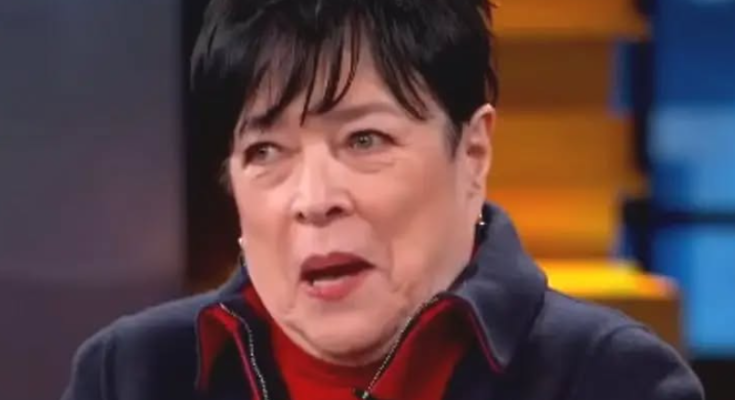
Kathy Bates: Turning Pain Into Power
When actress Kathy Bates first stepped into Hollywood, few could have imagined the resilience that would define her life as much as her artistry. Best known for her Oscar-winning performance in Misery, Bates has spent decades building a career on playing fierce, complex women. Off screen, however, she’s fought battles that tested her spirit even more deeply — a journey marked by fear, loss, and ultimately, triumph.
A Life-Changing Diagnosis
In 2003, Bates was diagnosed with ovarian cancer, a moment that she described as both “terrifying and strangely clarifying.” At the height of her career, she suddenly faced the reality that fame and talent could not protect her from illness. She underwent surgery and chemotherapy quietly, determined to keep working. “I didn’t want to be treated differently on set,” she once said. “I wanted to feel like myself — not like a patient.”
Her recovery was slow, but she fought through it, returning to the screen with new energy and deeper emotional depth. Then, nearly a decade later, in 2012, another blow came: breast cancer. This time, she chose to be open about her diagnosis, hoping her honesty would encourage others to get screened early.
“I thought, You’ve got to be kidding me. After surviving ovarian cancer, now this?” she told People magazine. “But then I thought, well, you can either let it take over you, or you can fight.”
The Hidden Battle: Lymphedema
Following a double mastectomy, Bates learned she had lymphedema, a chronic condition that affects the lymphatic system and causes painful swelling — often in the arms or legs. “When I woke up from surgery, I looked down at my arms, and they were already beginning to swell,” she said in an interview. “That’s when I knew this wasn’t going to be a short-term fight.”
Lymphedema, often misunderstood and under-researched, became Bates’s most personal cause. She described the condition as “a daily struggle that never fully goes away,” involving constant physical therapy, compression garments, and lifestyle adjustments. For many, it leads to emotional distress and isolation — but Bates refused to let it silence her.
Instead, she turned her frustration into activism. In 2018, she became a spokesperson for the Lymphatic Education & Research Network (LE&RN), dedicating herself to raising awareness and fighting for better medical recognition. “There are millions of people out there living with this condition,” she said. “They feel invisible. I want to change that.”
Advocacy and Acceptance
Bates’s advocacy didn’t just change the conversation around lymphedema — it transformed her own outlook. She began to speak candidly about self-acceptance, aging, and the emotional toll of surviving multiple illnesses. “I used to hide my compression sleeves under long sleeves or jackets,” she admitted. “Now I wear them proudly. They’re part of my story.”
Through her openness, she’s encouraged others to embrace vulnerability as strength. “We don’t talk enough about what happens after cancer,” Bates said during a public event. “There’s the physical healing, but also the emotional rebuilding. You have to find yourself again.”
Finding Strength in Storytelling
Even as her health challenges continued, Bates never stepped away from her craft. She continued to act in acclaimed roles — from the chilling American Horror Story anthology to Netflix’s Disjointed. Her performances carried new depth, drawn from the pain and resilience of her personal journey.
“When you’ve looked mortality in the face, it changes how you play every role,” she reflected. “You stop pretending. You just tell the truth.”
Directors and co-stars often describe Bates as “a force of nature” — someone who brings raw authenticity to every project. But for Bates, acting has also been therapeutic. “When I’m on set,” she said, “I feel alive. The pain, the fear — they take a back seat.”
Redefining What “Strong” Means
Despite her humor and toughness, Bates has acknowledged moments of despair. “There were days when I wanted to scream, when I didn’t recognize myself,” she shared. “You lose body parts, you gain scars, and you have to learn to love the person staring back at you in the mirror.”
Rather than “going berserk,” as tabloids might claim, Bates channeled that emotional storm into advocacy and art. “If I get angry, it’s not because I’m losing my mind,” she said with a smile. “It’s because people deserve better — better awareness, better healthcare, and better compassion.”
Her frankness has inspired many others facing chronic illness to speak out. She regularly connects with fans through social media and patient networks, offering encouragement and empathy. “I’m not a victim,” she insists. “I’m a warrior.”
Looking Forward
Today, in her mid-70s, Kathy Bates continues to balance her work, her activism, and her health. She meditates, exercises regularly, and stays committed to self-care. “I take it one day at a time,” she said. “Some days are harder than others. But every day I wake up is a gift.”
Her legacy now extends far beyond the screen. For many, Bates is not just an actress — she’s a symbol of resilience, proof that strength doesn’t mean being unbreakable. It means showing up, scars and all.
Conclusion
Kathy Bates’s story is not one of defeat or madness, but of extraordinary courage. Her journey through cancer and lymphedema has reshaped her perspective on life, fame, and beauty. In her own words: “You can’t wait for life to stop hurting before you start living.”
Through humor, honesty, and heart, Bates continues to show the world what true grace looks like — not the absence of pain, but the power to rise above it.

